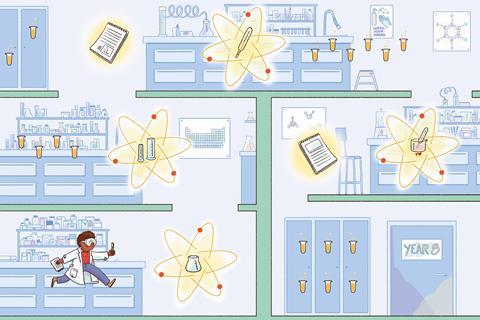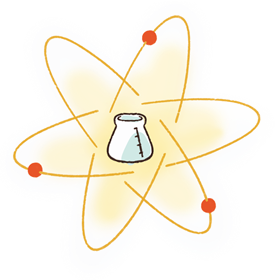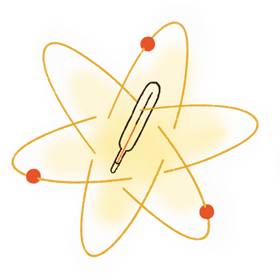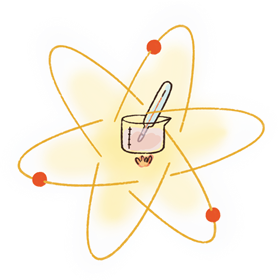Use these effective sequencing strategies to ensure practical work develops students’ knowledge and skills

Nearly half of 14–16 year-olds do practical work just by following the instructions, without understanding its purpose. Merely carrying out an activity and recording the outcomes is not an effective way to develop disciplinary knowledge. Effective practical work needs to be both ‘hands on’ and ‘minds on’. Teachers can underestimate the challenge of supporting pupils to understand what they see, often assuming that explanations will emerge from observations, known as the fallacy of induction.
Key vocabulary
- Substantive knowledge: subject knowledge and conceptual understanding. Includes ideas, laws, theories and models.
- Disciplinary knowledge: the knowledge required to carry out practical procedures. Includes scientific method, drawing conclusions, evaluating methods, understanding and predicting phenomena.
- Procedural knowledge: the knowledge needed to do something, such as use a thermometer or plot a graph.
Ofsted reports that disciplinary knowledge is framed as only ‘skills’ in school curriculums, and it’s assumed that pupils pick up these skills by ‘doing’. This often results in a tick-box approach in which a scheme of work indicates when pupils will visit each curriculum statement. Even if skills are repeated, it does not mean the knowledge has been developed or embedded. This lack of knowledge and understanding is seen in examination board feedback, which highlights that pupils struggle to effectively access questions relating to practical contexts. Direct observation of post-16 practical work also indicates a lack of confidence and understanding of underlying disciplinary knowledge.
Developing knowledge
Ofsted asserts that a high-quality science curriculum plans to develop pupils’ knowledge of working scientifically over time, which involves identifying the underpinning disciplinary knowledge pupils need.

Education Wales highlights the importance of considering sequencing disciplinary knowledge alongside the substantive and says ‘practical learning experiences of a specific, thematic or multidisciplinary nature should strengthen learning and conceptual understanding, not simply engage learners in memorable and enjoyable tasks. The planned sequencing of science and technology learning and teaching should consider the development of the knowledge or skills learners need, in advance of engaging them in more practical activities or inquiry.’
Purposeful practicals
The first step in sequencing disciplinary knowledge is to determine the purpose of a practical activity. Let’s consider a simple experiment, such as dissolving salt or sugar in water of different temperatures. To identify the purpose, consider a few key questions.
- What prior knowledge, both substantive and disciplinary, is needed?
- What knowledge will pupils develop during the activity? This is its purpose.
- How will you know the practical was successful? This is the assessment.
- What comes next to build on this learning?
Purposeful practicals
The first step in sequencing disciplinary knowledge is to determine the purpose of a practical activity. Let’s consider a simple experiment, such as dissolving salt or sugar in water of different temperatures. To identify the purpose, consider a few key questions. First, what prior knowledge, both substantive and disciplinary, is needed? Second, consider what knowledge pupils will develop during the activity. This is its purpose. Then, think about how you’ll know the practical was successful. This is the assessment. And, finally, what comes next to build on this learning?
The purpose may be to elicit misconceptions about dissolving and the conservation of mass (substantive), learn how to use a thermometer correctly (procedural) and record measurements in an appropriate format (disciplinary). The purpose of this practical will differ depending on pupils’ prior knowledge and manipulative skills.
After considering an activity’s purpose, it’s time to look at the bigger curriculum picture. How can a sequence of practical activities develop disciplinary knowledge over time? There are two potential approaches: the first looks at a typical pupil (pupil-centric), and the second focuses on an individual activity (practical-centric).
Pupil-centric sequencing
With this approach, teachers gauge what is expected of the typical student by the end of the academic year.
- What equipment should students be confident using?
- What practical skills and disciplinary knowledge should they have mastered?
- What practical activities are in your scheme of learning and how will these activities develop pupils’ knowledge and understanding?
- What opportunities are there to deepen and revisit students’ disciplinary knowledge? For gaps, what activities could be used to fill them?
- How does this link to future learning?

For example, by the end of the first year of secondary school, you might expect a typical pupil to be able to use a measuring cylinder to accurately measure a volume of liquid. Learning opportunities are then identified for pupils to meet, then develop and deepen their knowledge. In the first activity, you show pupils a measuring cylinder and explain how to use it correctly, including the concept of the meniscus and parallax error. In the next activity, show them different sizes of measuring cylinders and get them to work out what each small division is worth. Explain why we would use different-sized measuring cylinders to measure different volumes of liquid, introducing the concept of precision. Finally, students carry out a practical activity, choosing the correct size of measuring cylinder, and using it correctly. They also need to justify their choices.
During subsequent activities involving measuring cylinders, retrieve this knowledge through questioning. Future learning could include more precise measuring equipment, such as burettes, syringes and volumetric pipettes, and reading scales on upside down measuring cylinders.
Practical-centric sequencing
In this approach, you deconstruct activities to evaluate what prior procedural and disciplinary knowledge and understanding students need to be successful. Then identify where in the scheme of learning knowledge was introduced, practised and developed. A concept or piece of equipment may be completely new, but there will be relevant learning within earlier activities.
- What’s the purpose of the practical activity?
- What procedural and disciplinary knowledge do students need to undertake the activity?
- What equipment or techniques are new?
- What equipment do students know, perhaps with lower levels of precision?
- Where has the scheme of learning covered prior knowledge and has it been revisited or deepened? What activities could you use to fill learning gaps?
- What knowledge or understanding is being developed, deepened or consolidated?
- How does this activity link to future learning?
For example, with an accurate acid–alkali titration, the purpose is likely to be applying substantive knowledge to find the unknown concentration of a solution. Pupils will meet burettes, volumetric pipettes and end-point indicators, then record data in a new titration-specific format and calculate a mean using concordant data.
| Prior procedural and disciplinary knowledge | New procedural and disciplinary knowledge |
|---|---|
|
Use of measuring cylinders, syringes and Pasteur pipettes. The concept of precision |
Use of burette and volumetric pipette |
|
Use of indicators, eg litmus, iodine and universal Indicator |
Use of end-point indicators, eg phenolphthalein or methyl orange |
|
Record measurements in a table |
Record titres in a titration-specific table |
|
How to and why calculate the mean of repeated results |
Calculate the mean of concordant data |
At this stage, it’s important to identify when and how this prior procedural and disciplinary knowledge was covered, and whether there are any gaps. Ensure pupils can access this practical with some additional activities. First, demonstrate how to use a burette and volumetric pipette. Then, discuss why you’re using a burette and volumetric pipette, rather than a measuring cylinder. Finally, model how to draw a results table for a titration and how to calculate the mean using concordant data.
For example, with an accurate acid–alkali titration, the purpose is likely to be applying substantive knowledge to find the unknown concentration of a solution. Pupils will meet burettes, volumetric pipettes and end-point indicators, then record data in a new titration-specific format and calculate a mean using concordant data.
At this stage, it’s important to identify when and how this prior procedural and disciplinary knowledge was covered, and whether there are any gaps. Ensure pupils can access this practical with some additional activities. First, demonstrate how to use a burette and volumetric pipette. Then, discuss why you’re using a burette and volumetric pipette, rather than a measuring cylinder. Finally, model how to draw a results table for a titration and how to calculate the mean using concordant data.
Successful sequencing

Sequencing can be assessed similarly to substantive knowledge.
- Baseline assessment: where are pupils and how do you know? Do baseline assessments include disciplinary and substantive knowledge questions? What will you do with this information?
- Retrieval practice, low-stakes and formative assessment: do you regularly retrieve and assess pupils’ procedural and disciplinary knowledge? What interventions are in place, if needed?
- Summative assessment: do end-of-topic and year assessments assess disciplinary knowledge?
- Performance assessment: have you considered assessing pupils during practical activities (like drama or PE do)?
More support
- Find tools to help you track, feed back and target practical skills development for post-16 learners.
- Target specific essential scientific skills, with strategies and classroom activities from our Teaching science skills series.
- For more on purposeful practical work, try using this intended outcomes template and read more about one of the seven simple rules for science teaching.
- Use baseline assessments to effectively assess your students and get an accurate picture of their prior knowledge.
Article by school improvement consultant Amanda Clegg and educational consultant teacher Karen Colins
Downloads
Sequencing practical work forms
Handout | PDF, Size 0.15 mbSequencing practical work forms
Editable handout | Word, Size 0.44 mb









No comments yet